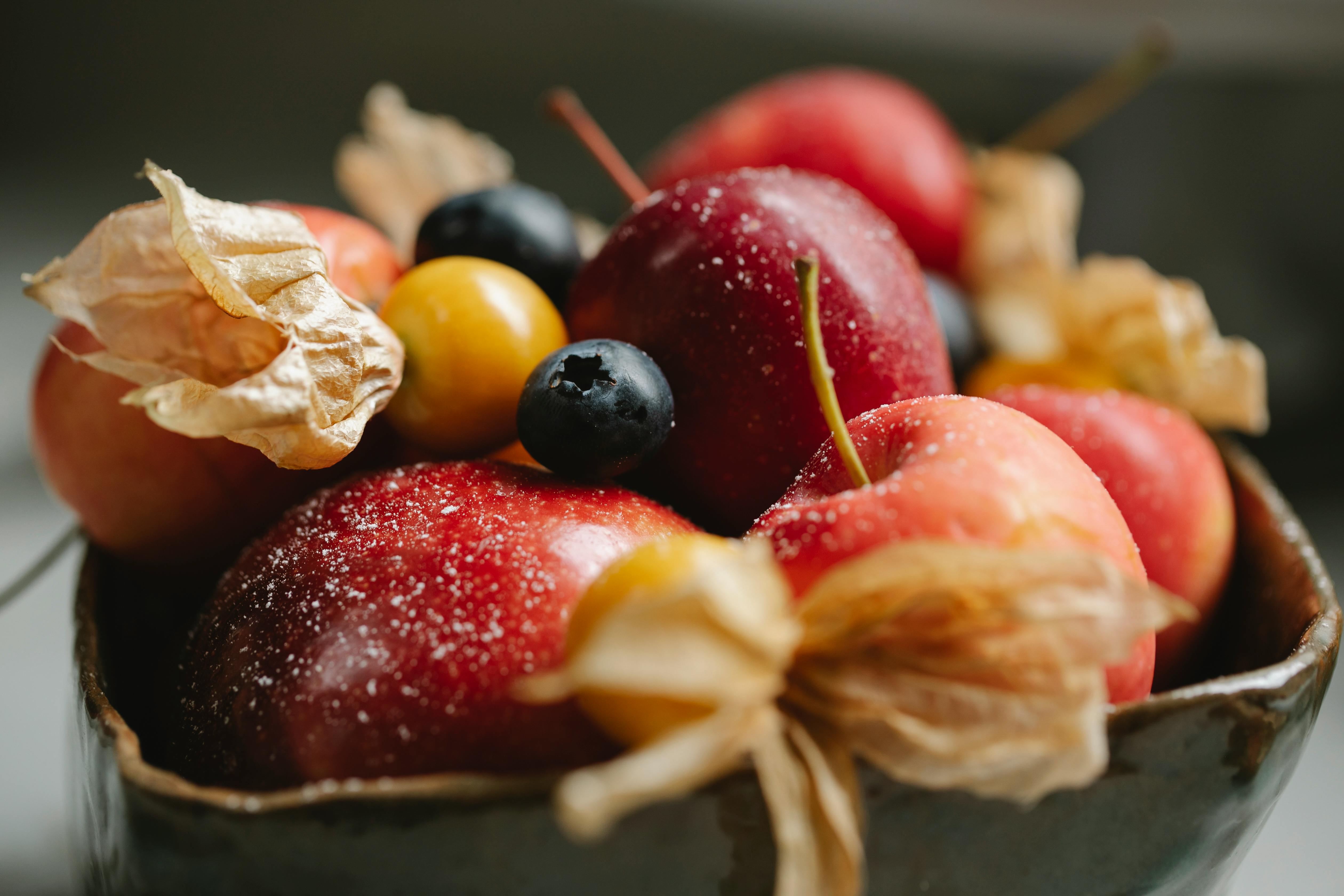Picking good blueberries can be a tricky task. Knowing which blueberries to choose can mean the difference between a delicious treat and a sour disappointment. Fortunately, there are some simple tips to help you select the best blueberries for your needs. In this article, we’ll cover how to identify ripe and healthy blueberries, the best places to buy them, and how to store them properly. With these few simple steps, you’ll be able to pick the perfect blueberries every time.When selecting quality blueberries, look for plump and firm berries that are deep in color. Avoid any berries that are wrinkled, have white or green patches, or are soft or mushy. Check for any mold or signs of spoilage on the container before purchasing. Smell the blueberries and make sure they have a pleasant aroma and not an off smell. If possible, taste a berry to ensure it is sweet and juicy. Additionally, select organic blueberries when available as these tend to have a higher quality than conventionally grown options.
Appearance
When buying blueberries, you should look for firm, plump berries that are deep blue in color. The berries should have a natural shine and be free of any bruises or soft spots. Avoid buying blueberries that look dry or wrinkled, as they may have spoiled.
Smell
The berries should also have a sweet, fruity aroma. If the smell is off or sour, the berries are likely not fresh.
Size
The size of a blueberry can vary depending on the type of berry. Wild blueberries tend to be smaller than cultivated varieties. When selecting your berries, look for those that are uniform in size and shape to ensure even cooking and baking.
Packaging
When buying pre-packaged blueberries, make sure that the packaging is intact and not damaged in any way. The container should also be free of any visible mold or moisture buildup as this may indicate spoilage of the product inside. Look for packages that are labeled “certified organic” if you’re looking for higher quality fruit with fewer pesticides used in production.
Signs of Freshness in Blueberries
When selecting blueberries, look for ones that are firm, plump, and have a deep blue color. The skin should be smooth and without bruises, dents, or signs of mold. Additionally, the berries should be free from wetness or condensation.
Blueberries that are slightly soft to the touch can still be fresh; however, if the berries are mushy when gently squeezed this is an indication of spoilage. If there is any evidence of leaking juice or white residue near the stem end then the blueberry is not fresh.
The aroma of fresh blueberries is sweet and fruity; avoid buying ones that have a sour or fermented smell as these will not taste good when eaten. Fresh blueberries will also have a pleasant taste when eaten raw; any hint of bitterness usually indicates spoilage.
When buying pre-packaged containers of blueberries check for any signs of moisture inside the packaging as well as expiration dates should be checked to ensure that it is still within its best before date. Another indication that berries are past their prime is if they are stuck together in clumps inside the container.
Variety
When choosing blueberries, it is important to consider the variety. There are many types of blueberries, including wild and cultivated varieties. Wild blueberries are smaller in size and have a stronger flavor, while cultivated varieties are larger and sweeter. It is important to choose a variety that will best suit your needs.
Size
Another factor to consider when choosing blueberries is the size. Blueberries come in various sizes, from very small to medium-sized and even large berries. The size of the berry will depend on the variety you choose, so it is important to consider what size you need for your recipes or other uses.
Storage
When selecting blueberries, it is also important to think about how they will be stored. Blueberries should be stored in a cool, dark place away from direct sunlight. If storing for extended periods of time, it is best to freeze them or store them in the refrigerator. This will help preserve their flavor and texture.
Organic
Finally, when choosing blueberries it is essential to consider whether they are organic or conventionally grown. Organic produce has been grown without the use of synthetic chemicals and pesticides which can be harmful for both people and the environment. It is important to choose organic blueberries whenever possible as they are more nutritious and better for the planet.
By taking into account these factors when selecting blueberries, you can ensure that you are getting the highest quality product available.
Tips for Spotting the Best Blueberries
Blueberries are a delicious, nutritious snack that can be enjoyed fresh, frozen, or dried. With so many varieties of blueberries on the market today, it can be difficult to determine which ones are the best. Here are some tips for spotting the best blueberries:
Look for bright colors. When selecting fresh blueberries, look for those that are bright and firm with a deep blue color. Avoid berries that are dull in color or have any soft spots.
Smell the berries. A sweet aroma is a good indication of ripe and flavorful blueberries. If they don’t smell sweet, they may not taste as good as those that do.
Check for size and shape. The larger the berry, the sweeter it will be. Look for plump blueberries with an even shape and no bruises or blemishes.
Examine the packaging. If you’re buying packaged blueberries, make sure they’re stored in a cool place and sealed tightly to ensure maximum freshness and flavor.
These tips can help you spot the best blueberries so you can enjoy them at their peak flavor and nutritional value. Enjoy!

How to Tell If a Blueberry Is Ripe
Ripe blueberries are a sweet and delicious treat, so it’s important to know how to tell if they’re ready to eat. The key to knowing when blueberries are ripe is examining their color and firmness. Fresh, ripe blueberries should be dry, firm, and plump with a vibrant blue color. If the berries have any traces of red, this means that they are not yet ripe.
When buying fresh blueberries from the store or farmer’s market, it’s best to look for ones that have a consistent color and size. Berries that are too soft may be overripe or have already begun to spoil. It’s also important to check for signs of mold or discoloration on the berries before purchasing them.
If you’re picking blueberries straight from the bush in your backyard, you’ll want to look for ones that are deep in color and plump with juice. Gently press each berry between your thumb and forefinger – if there is little resistance, then the berry is ripe and ready to eat! Keep in mind that unripe berries will ripen over time if left on the bush or stored properly in your refrigerator at home.
When purchasing or harvesting your own blueberries, it’s best to use them as soon as possible for optimal flavor and freshness. However, if you need to store them for later use, make sure they are refrigerated quickly after picking or purchasing them. Once stored in the refrigerator, they will remain fresh for about five days before beginning to spoil.
Avoid Overripe Blueberries
When selecting blueberries, it’s important to make sure they are not overripe. Overripe blueberries will not have the same sweet taste as a ripe one and can be mushy and lack flavor. It’s also important to make sure that the blueberries are free of mold or any signs of spoilage. When selecting blueberries, look for ones that have a bright color and are firm but not hard.
Avoid Rinsing Blueberries Too Early
Another thing to avoid when selecting blueberries is rinsing them too early. If you rinse the berries before you are ready to use them, they will start to spoil faster. It’s best to rinse them just before you use them or just before eating them. This will ensure that they stay fresh longer and stay sweet.
Avoid Buying Pre-Packaged Berries
When selecting blueberries, it’s best to avoid buying pre-packaged berries in plastic containers or bags. These berries can often be old or overripe and lack flavor. It’s best to buy fresh berried from your local farmer’s market or grocery store where you can inspect them for freshness and quality before purchasing them.
Avoid Berries That Are Too Big or Small
Finally, when selecting blueberries, try to avoid ones that are too big or too small. The larger ones may be mealy and lack flavor while the smaller ones may not have enough sweetness or juice. Look for berries that are uniform in size so that they all cook evenly in recipes and have a consistent taste when eaten raw.
What Makes a Good Quality Blueberry?
A good quality blueberry should be firm, plump and have a deep blue colour. It should also be sweet and juicy, with a hint of tartness. The skin should be thin but not too delicate; it should also have a uniform shape and size. A high-quality blueberry should not have any bruises, spots or other blemishes. It should also be free from any mould or rot. Finally, the flavour of the fruit should be sweet and complex with no off-flavours or taste defects.
When purchasing blueberries, always look for ones that have bright colours and are firm to the touch. It is best to buy organic blueberries if possible, as this will ensure that they are free from pesticides and other contaminants that may affect their quality. Also look for berries that are uniform in size, as this will help ensure even ripening and cooking times when using them in recipes. If you can’t find organic berries, opt for those with intact skins to ensure maximum freshness.
When storing fresh blueberries, it is important to use an airtight container to keep them fresh for as long as possible. Place them in the refrigerator in a single layer on top of paper towels to absorb any excess moisture. Be sure to use them within two weeks of purchase for best results. When freezing blueberries, make sure they are dry before packaging them in an airtight container or freezer bag. Frozen berries can last up to 12 months if stored properly.
Overall, good quality blueberries are plump and firm with deep blue colouring and sweet flavour without any off-tastes or blemishes. When selecting your berries make sure they are bright in colour and uniform in size; also opt for organic if possible and store them properly so they stay fresh longer.<
Conclusion
Picking good blueberries doesn’t have to be a challenge. By following the steps outlined above, you can ensure that you get the best blueberries every time. Start by looking for plump berries that are dry, firm and deep blue in color. Smell them to make sure they are fragrant, and give them a gentle squeeze to make sure they are not too soft or too hard. Finally, taste one to make sure it is sweet and flavorful. Once you have chosen a good batch of blueberries, store them in a cool place to keep them fresh for longer.
Overall, picking good blueberries is all about paying attention to the details. With just a few basic tips and tricks, you can find the perfect berries each and every time!



